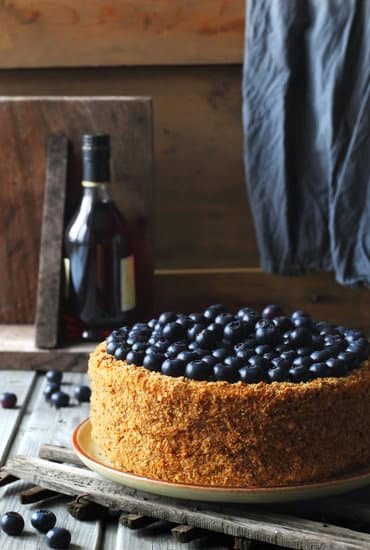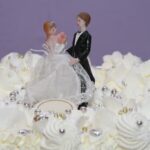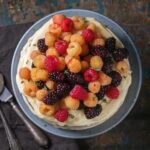Are you looking to create a show-stopping centerpiece for your next celebration? Learning how to decorate a tiered cake can be a fun and rewarding experience, allowing you to showcase your creativity and baking skills. Whether it’s for a wedding, birthday, or special event, a beautifully decorated tiered cake is sure to impress your guests.
To start, choosing the right tiered cake design is crucial in achieving the look you want. From classic and elegant to modern and whimsical, there are endless possibilities when it comes to selecting the perfect design for your tiered cake. In this article, we will guide you through the process of decorating a tiered cake, covering everything from essential tools and equipment to troubleshooting common decorating issues.
We’ll explore techniques for preparing and stacking the cake layers, as well as crumb coating and frosting methods that will give your cake a flawless finish. You’ll also learn how to create stunning cake toppers, master piping and decorating techniques, and incorporate edible flowers and decorative elements for added flair.
By the end of this article, you’ll have the know-how to achieve a professional-looking tiered cake that’s sure to be the highlight of any occasion.
Essential Tools and Equipment for Decorating a Tiered Cake
When it comes to decorating a tiered cake, having the right tools and equipment is essential to create a stunning and professional-looking dessert. Whether you are a beginner or experienced baker, having the correct supplies will make the process much easier and enjoyable. Here are some essential tools and equipment that you will need when decorating a tiered cake:
- Offset spatulas: Offset spatulas are essential for spreading frosting and smoothing it out on the cake layers. Having different sizes of offset spatulas will give you more control over your frosting application.
- Piping bags and tips: Piping bags and tips are necessary for creating intricate designs, borders, and writing on your tiered cake. Make sure to have a variety of piping tips to achieve different effects.
- Cake turntable: A cake turntable is a game changer when it comes to decorating cakes. It allows you to easily rotate the cake as you frost and decorate, resulting in a smooth and even finish.
- Bench scraper: A bench scraper is useful for achieving clean edges when frosting your tiered cake. It is also great for smoothing out the sides of the cake.
- Fondant smoother: If you plan on working with fondant, having a fondant smoother will help you achieve a flawless finish on your cake’s surface.
Having these essential tools and equipment at your disposal will ensure that you have everything you need to decorate a tiered cake like a pro. Additionally, investing in quality supplies will make the decorating process much more efficient and enjoyable.
In addition to these tools, it is crucial to have other basic baking essentials such as a rotating cake stand, parchment paper, leveler for even cake layers, cooling racks, and an assortment of food coloring gels or powders.
Assembling all the necessary tools beforehand will help streamline the decorating process and allow for maximum creativity when adorning your tiered masterpiece with delicious and visually appealing decorations such as edible flowers or themed elements like figurines or other decorative accents.
Preparing and Stacking the Cake Layers
Once your cake layers are ready, it’s time to start stacking. Begin by placing a small amount of frosting or ganache on the center of your cake board or serving platter to secure the bottom layer of the cake. Then, carefully lift and place the first layer on top, making sure it’s centered.
Spread an even layer of frosting or filling on top before adding the next layer. Repeat this process with all of your cake layers, making sure to stack them evenly and straight.
To prevent any leaning or shifting of the tiers, consider using dowels or support rods between the layers. These supports will help distribute the weight of the upper tiers and ensure that your tiered cake remains stable throughout transportation and display. Insert them into the bottom tier before adding each subsequent layer, trimming them to the appropriate height as needed.
Once all your tiers are stacked, use a large offset spatula to gently press down on each layer to ensure they’re firmly in place and aligned properly.
It’s crucial to have neat and even layers when preparing and stacking a tiered cake, as this provides a strong foundation for further decorating techniques such as crumb coating and frosting application.
| Tiered Cake Preparation Steps | Details |
|---|---|
| Leveling Cake Layers | Ensure that all cake layers are even and level for stability. |
| Stacking Techniques | Use proper methods like using support rods between tiers for stability. |
| Alignment | Make sure all layers are aligned properly before moving on with decorating. |
Crumb Coating and Frosting Techniques
After preparing and stacking the cake layers, the next crucial step in decorating a tiered cake is crumb coating and applying the final frosting. This process not only helps to seal in any loose crumbs but also provides a smooth base for your final decorative frosting.
To crumb coat a tiered cake, start by spreading a thin layer of frosting over the entire cake using an offset spatula. This initial layer will trap any loose crumbs, preventing them from showing through the final layer of frosting. Once the crumb coat is applied, refrigerate the cake for about 15-30 minutes to allow the first layer of frosting to set.
When it comes to applying the final frosting, there are various techniques you can use to achieve a professional finish. Smooth buttercream or fondant over each tier using an offset spatula or a bench scraper. For a more textured look, consider using piping techniques to create swirls, rosettes, or other decorative patterns with your frosting.
Now that you’ve learned about crumb coating and frosting techniques for tiered cakes, you’re one step closer to mastering how to decorate a tiered cake like a pro.
| Tiered Cake Decorating Technique | Description |
|---|---|
| Crumb Coating | An essential step in decorating a tiered cake to seal in loose crumbs before applying the final frosting. |
| Frosting Techniques | Various methods such as using an offset spatula or piping to achieve different finishes on your tiered cake. |
Designing and Creating a Stunning Cake Topper
Choosing the Right Topper
When considering the design for a cake topper, it is crucial to match it with the aesthetic of the rest of the cake. Whether it’s a traditional wedding cake or a fun birthday cake, the topper should reflect the style and personality of the event. For example, for a rustic-themed wedding, a wooden or floral topper might be more fitting, while for a children’s birthday party, a colorful and playful topper could be more appropriate.
Creating Custom Cake Toppers
For those looking for something truly unique, custom-made cake toppers offer endless possibilities. From personalized monograms and figurines to thematic elements like seashells or superhero symbols, custom toppers can be crafted from various materials such as fondant, gum paste, or even non-edible materials like wood or acrylic.
DIY Cake Toppers
Another popular trend in cake decorating is DIY cake toppers. These can be created using wire, paper, fabric, or even fresh flowers if desired. There are plenty of tutorials available online that provide step-by-step instructions on how to make your own unique cake topper for any occasion.
By carefully choosing or creating a stunning cake topper, one can elevate the visual appeal of their tiered cake and impress their guests with a personalized and stylish finishing touch.
Piping and Decorating Techniques for Tiered Cakes
When it comes to decorating tiered cakes, piping and various decorating techniques are essential for creating a visually stunning and professional-looking dessert. Whether you are a beginner or an experienced baker, mastering these techniques can take your cake decorating skills to the next level. In this section, we will explore some of the most popular piping and decorating techniques for tiered cakes.
Buttercream Piping Techniques
One of the most common ways to decorate a tiered cake is through buttercream piping. This versatile technique allows you to create intricate designs, borders, and patterns using different piping tips. From classic swirls and rosettes to intricate lace designs and floral patterns, buttercream piping can add a touch of elegance and sophistication to your tiered cake.
Fondant Decorations
Fondant is another popular option for decorating tiered cakes. This pliable icing can be rolled out and shaped into various decorations such as flowers, ribbons, bows, and even sculpted figures. Fondant offers a smooth and polished finish to your cake while allowing for endless creative possibilities in terms of design and decoration.
Chocolate Garnishes
For those who love working with chocolate, incorporating chocolate garnishes is a great way to add texture and flavor to your tiered cake. From delicate chocolate curls and shavings to intricate chocolate filigree designs, chocolate garnishes can elevate the overall look of your cake while adding a delicious finishing touch.
Mastering these piping and decorating techniques takes practice, patience, and creativity. Experimenting with different tools, colors, textures, and designs will allow you to develop your own unique style when it comes to decorating tiered cakes. Don’t be afraid to try new techniques and push the boundaries of traditional cake decorating – the results may surprise you.
Incorporating Edible Flowers and Decorative Elements
When it comes to decorating a tiered cake, incorporating edible flowers and decorative elements can add an extra touch of elegance and beauty to your creation. Whether you’re preparing a cake for a wedding, birthday, or special event, using edible flowers and other decorative elements can take your cake to the next level. Here are some tips on how to incorporate these elements into your tiered cake design:
1. Choose the right edible flowers: When selecting edible flowers for your tiered cake, it’s important to choose varieties that are safe for consumption. Popular choices include roses, violets, pansies, lavender, and calendula. Make sure to source your edible flowers from a reputable supplier to ensure they are organic and free from pesticides.
2. Preparing the flowers: Before adding the edible flowers to your cake, it’s essential to properly prepare them. Gently wash the flowers in cold water and allow them to air dry on paper towels. It’s also important to remove any green parts or stems from the flowers before placing them on the cake.
3. Adding decorative elements: In addition to edible flowers, there are various other decorative elements you can incorporate into your tiered cake design. From chocolate shavings and dragees to fondant accents and sugar pearls, these decorative elements can add texture and visual interest to your cake.
Incorporating edible flowers and decorative elements into your tiered cake design can elevate the overall look of your creation. By following these tips and incorporating these beautiful touches, you can create a stunning centerpiece that will wow your guests with both its taste and its visual appeal. With careful selection and placement of these elements, you can create a tiered cake that looks as good as it tastes.
Tips and Tricks for a Professional Finish
When it comes to decorating a tiered cake, achieving a professional finish is essential for creating a stunning and visually appealing dessert. There are several tips and tricks that can help elevate the overall look of your tiered cake and make it appear as if it was created by a professional pastry chef.
One tip for achieving a professional finish is to ensure that your cake layers are level and evenly stacked. This can be achieved by using a cake leveler or serrated knife to trim any domed tops and create an even surface for stacking. Additionally, ensuring that each layer is securely stacked and centered on top of one another will prevent any leaning or tilting of the cake.
Another important tip is to use a turntable when frosting and decorating your tiered cake. A turntable allows you to easily rotate the cake as you apply frosting, making it easier to achieve smooth and even layers of frosting. This tool also helps with precision when piping designs onto the cake.
Additionally, paying attention to small details such as smoothing out any imperfections in the frosting, creating sharp edges on the corners of the cake, and using a bench scraper or offset spatula for clean lines can all contribute to achieving a polished and professional finish. By following these tips and utilizing the right tools, you can create a beautifully decorated tiered cake that looks like it was made by a pro.
Troubleshooting Common Decorating Issues
Decorating a tiered cake can be a fun and rewarding experience, but it can also come with its fair share of challenges. From uneven layers to bulging frosting, there are several common decorating issues that can arise when working with tiered cakes. However, with the right tips and techniques, you can troubleshoot these issues and achieve a beautifully decorated tiered cake.
One common decorating issue when working with tiered cakes is bulging frosting between layers. This can happen when the filling or frosting between the cake layers is too soft or the cake layers themselves are not properly leveled.
To prevent this issue, make sure to use a firm filling and allow the cake layers to settle before applying the final coat of frosting. Additionally, using a crumb coat on each layer before adding the final coat of frosting can help create a smooth finish without any bulges.
Another common issue when decorating tiered cakes is achieving straight and even tiers. Uneven tiers can result from improperly stacking the cake layers or using uneven amounts of filling between each layer. To troubleshoot this issue, use a leveler to ensure each cake layer is even before stacking. It’s also important to support each tier with dowels or straws to prevent leaning or collapsing.
In addition to these common issues, other challenges such as air bubbles in the frosting, color bleeding, and fondant cracking can also occur when decorating tiered cakes. By understanding how to properly troubleshoot these issues and implement effective solutions, you can confidently decorate a stunning tiered cake for any special occasion.
Decorating a tiered cake may seem daunting at first, but with the right techniques and troubleshooting skills, you can overcome common decorating issues and create a professional-looking masterpiece that will impress your friends and family.
Final Presentation and Display of the Tiered Cake
In conclusion, decorating a tiered cake can be a rewarding and enjoyable experience, especially when the final presentation and display are done with care and attention to detail. After going through the process of choosing the right design, preparing and stacking the cake layers, frosting, and decorating techniques, it all comes down to the final presentation of your masterpiece.
When it comes to displaying your tiered cake, consider using a sturdy and decorative cake stand that complements the overall design of the cake. This will not only showcase your creation but also elevate its visual appeal. Additionally, pay attention to lighting and background when choosing a location for displaying the cake. A well-lit area with a simple backdrop will allow the intricate details of your decorated tiered cake to shine.
Lastly, don’t forget to capture your hard work with high-quality photos before serving the cake. Whether it’s for a special occasion or just for personal satisfaction, taking beautiful pictures will serve as a lasting memory of your mastery in decorating tiered cakes. And most importantly, remember that practice makes perfect – keep honing your skills in decorating tiered cakes and soon enough you’ll be creating stunning confections worthy of any professional baker.
Frequently Asked Questions
Do You Put Cake Boards Between Tiers?
Yes, cake boards are commonly used between tiers to provide support and stability. They help prevent the cake from sinking and make it easier to stack multiple layers on top of each other.
How Do You Hold Cake Tiers Together?
Cake tiers can be held together using dowels or straws. These supports are inserted into the lower layers of the cake, providing a stable base for the tiers above. This helps prevent the cake from collapsing under the weight of multiple layers.
What Do You Put in Between Layers of Cake?
Between layers of cake, a variety of fillings can be used depending on personal preference and the type of cake being made. Common options include buttercream frosting, fruit preserves, chocolate ganache, or whipped cream. The filling adds flavor and moisture to each layer, enhancing the overall taste and texture of the cake.

Welcome to our cake decorating blog! My name is Destiny Flores, and I am the proud owner of a cake decorating business named Cake Karma. Our mission is to provide delicious, beautiful cakes for all occasions. We specialize in creating custom cakes that are tailored specifically to each customer’s individual needs and tastes.





